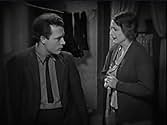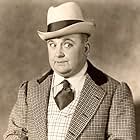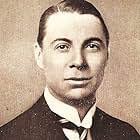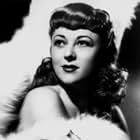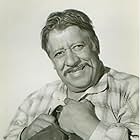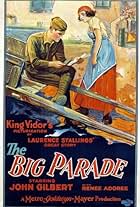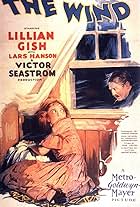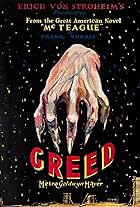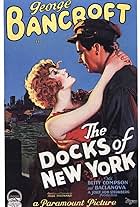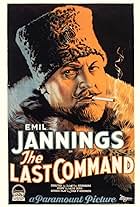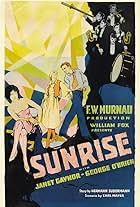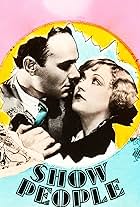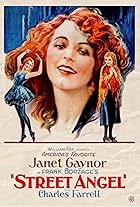IMDb RATING
8.1/10
9.4K
YOUR RATING
The life of a man and woman together in a large, impersonal metropolis through their hopes, struggles, and downfalls.The life of a man and woman together in a large, impersonal metropolis through their hopes, struggles, and downfalls.The life of a man and woman together in a large, impersonal metropolis through their hopes, struggles, and downfalls.
- Nominated for 2 Oscars
- 4 wins & 2 nominations total
John D. Bloss
- Boy on Fence
- (uncredited)
Roy Bloss
- Boy on Fence
- (uncredited)
Sidney Bracey
- John's Supervisor
- (uncredited)
Johnny Downs
- John - Age 12
- (uncredited)
Sally Eilers
- Party Girl at Bert's Place
- (uncredited)
Joseph W. Girard
- Member of Board of Directors
- (uncredited)
Pat Harmon
- Truck Driver
- (uncredited)
Chris-Pin Martin
- Worker in Hallway
- (uncredited)
Claude Payton
- Undetermined Secondary Role
- (uncredited)
Storyline
Did you know
- TriviaSeveral years after the film was made, alcoholism had taken its toll on lead actor James Murray, who was reduced to panhandling in the street. Ironically, one of the passers-by he solicited for money turned out to be King Vidor, who offered him a part in the film's semi-sequel, Our Daily Bread (1934). Murray declined the offer, thinking it was only made out of pity. He died in 1936 at the age of 35 in a drowning incident. Vidor was sufficiently compelled to write his life story as an unrealized screenplay, which he called "The Actor".
- GoofsAfter John sprays himself with milk when opening the bottle, his clothes go from covered with milk to clean from one shot to the next.
- Quotes
Title Card: The crowd laughs with you always... but it will cry with you for only a day.
- Alternate versionsThere is an Italian edition of this film on DVD, distributed by DNA srl, "LA FOLLA (1928) + LA GRANDE PARATA (1925)" (2 Films on a single DVD), re-edited with the contribution of film historian Riccardo Cusin. This version is also available for streaming on some platforms.
- ConnectionsEdited into The Easiest Way (1931)
Featured review
"THE CROWD" (Metro-Goldwyn-Mayer, 1928), directed by King Vidor, is a story about the average man, a born dreamer who promises but doesn't deliver, and his struggle to succeed and fight financial ruin. While top-billing goes to Vidor's wife, Eleanor Boardman, the movie belongs to an unknown named James Murray, who, in his debut performance as a movie actor, gives a remarkable performance as an ordinary American man with high ambitions.
The story about this common man begins on the 124th birthday of America, July 4th, 1900, in which a doctor delivers a baby boy to the Sims household. The baby boy is named John. The next scene finds John, now age 12, sitting on a wooden fence with his buddies, all discussing what they want to be when they grow up. John tells the other boys that he has big plans for his future, that he's going to be somebody really big. Suddenly a horse pulling ambulance stops in front of the Sims home. As Johnny rushes to see what's wrong, he is told by his mother that his father has died. Before the fade-out, this scene follows the boy with the shock-filled face walking alongside his mother up a long flight of stairs to be his father for the very last time. Years pass. Now John Sims (James Murray), age 21, has left his small town existence for a new life in New York City with great ambition to succeed. He later obtains an office job by day and goes to school at night. One evening, Bert (Bert Roach), John's co-worker and friend, persuades him to skip his studies and go on a double date with him and Jane (Estelle Clark). John is introduced to Jane's friend, Mary (Eleanor Boardman). John and Mary become acquainted, and after spending the fun evening in Coney Island, John proposes marriage to her as they return home by subway. Against the advise of her brothers (Daniel G. Tomlinson and Dell Henderson), Mary marries John. Over the years John and Mary become the parents of two children, a boy called Junior (Freddie Burke Frederick) and a girl (Alice Mildred Puter). While all seems to be going right for John, his marriage starts to fall apart as Mary gets fed up with John's constant promises he fails to keep, the loss of one of his children followed by the loss of his job, and depression leading John to a brink of suicide.
While MGM is best known for producing top-notch films headed by top-named stars, "The Crowd" features none of those elements. Instead of heading the cast with box office draws as John Gilbert and Norma Shearer, who could easily have played John and Mary, director Vidor uses his actress wife, Boardman, and an unknown he picked from the crowd named James Murray, supported by actors not known for anything more than minor character parts, such as Bert Roach, Lucy Beaumont as Mary's mother; and a crowd of street extras. What makes this movie so remarkable today is that the leading players are so real. John and Mary could be anybody watching this film. And the best of all, they aren't faked with glamour and sophistication that best expresses MGM movies. John and Mary are just ordinary people going about their ordinary lives. They love, quarrel and make up again. And whether "The Crowd" was actually filmed on location in New York City or not doesn't really matter. The feel of The Big Apple is there from the early sequence in which John observes New York City from the Hudson River ferry to the family having a picnic gathering on the beach on Coney Island; as well as the camera panning through the skyscrapers of the big city which leads to that now famous shot to the overhead view of a gigantic office with rows of desks and white-collar workers in their nine to five jobs.
The characters of John and Mary Sims were presented on film once again by King Vidor in an independent film titled "Our Daily Bread" (United Artists, 1934) starring Karen Morley and Tom Keene in the roles originated by Boardman and Murray. While Morley and Keene almost physically resemble their predecessors, what a treat it would have been if Boardman and Murray reprised their roles in the talkie sequel which depicts the Sims couple (sans children) struggling through the Depression by starting a farming community. By then, Boardman retired from acting and Murray was, like the character he played in "The Crowd," a man with ambition who fails to meet with success. Murray's reported drowning death in 1936 remains a mystery as to whether it was suicide or accidental. It's no wonder why Murray was so good in playing John Sims. He was really starring in his own life story, and didn't know it.
"The Crowd" was one of 13 MGM silent features that premiered on New York City's public television station of WNET, Channel 13, September 28, 1973, on MOVIES, GREAT MOVIES, hosted by Richard Schickel, with movie accompanied by an original score produced for this series. It was also one of the movies I recall watching every time it showed mainly because of an ordinary story that succeeds in holding my interest from start to finish. It's still a remarkable even today, ranking it one of the best silent movies ever produced. Out of circulation for more than a decade, "The Crowd" was distributed on video cassette in 1989 with a new Thames Orchestra score conducted by Carl Davis. At the running time of 104 minutes, "The Crowd" currently plays on Turner Classic Movies on a shorter length of 93 minutes. It's been mentioned by TV hosts, including Robert Osborne of TCM, that "The Crowd" was not an initial success, but thanks to frequent revivals in recent decades, it has been hailed, rightfully, as a cinematic masterpiece. (****)
The story about this common man begins on the 124th birthday of America, July 4th, 1900, in which a doctor delivers a baby boy to the Sims household. The baby boy is named John. The next scene finds John, now age 12, sitting on a wooden fence with his buddies, all discussing what they want to be when they grow up. John tells the other boys that he has big plans for his future, that he's going to be somebody really big. Suddenly a horse pulling ambulance stops in front of the Sims home. As Johnny rushes to see what's wrong, he is told by his mother that his father has died. Before the fade-out, this scene follows the boy with the shock-filled face walking alongside his mother up a long flight of stairs to be his father for the very last time. Years pass. Now John Sims (James Murray), age 21, has left his small town existence for a new life in New York City with great ambition to succeed. He later obtains an office job by day and goes to school at night. One evening, Bert (Bert Roach), John's co-worker and friend, persuades him to skip his studies and go on a double date with him and Jane (Estelle Clark). John is introduced to Jane's friend, Mary (Eleanor Boardman). John and Mary become acquainted, and after spending the fun evening in Coney Island, John proposes marriage to her as they return home by subway. Against the advise of her brothers (Daniel G. Tomlinson and Dell Henderson), Mary marries John. Over the years John and Mary become the parents of two children, a boy called Junior (Freddie Burke Frederick) and a girl (Alice Mildred Puter). While all seems to be going right for John, his marriage starts to fall apart as Mary gets fed up with John's constant promises he fails to keep, the loss of one of his children followed by the loss of his job, and depression leading John to a brink of suicide.
While MGM is best known for producing top-notch films headed by top-named stars, "The Crowd" features none of those elements. Instead of heading the cast with box office draws as John Gilbert and Norma Shearer, who could easily have played John and Mary, director Vidor uses his actress wife, Boardman, and an unknown he picked from the crowd named James Murray, supported by actors not known for anything more than minor character parts, such as Bert Roach, Lucy Beaumont as Mary's mother; and a crowd of street extras. What makes this movie so remarkable today is that the leading players are so real. John and Mary could be anybody watching this film. And the best of all, they aren't faked with glamour and sophistication that best expresses MGM movies. John and Mary are just ordinary people going about their ordinary lives. They love, quarrel and make up again. And whether "The Crowd" was actually filmed on location in New York City or not doesn't really matter. The feel of The Big Apple is there from the early sequence in which John observes New York City from the Hudson River ferry to the family having a picnic gathering on the beach on Coney Island; as well as the camera panning through the skyscrapers of the big city which leads to that now famous shot to the overhead view of a gigantic office with rows of desks and white-collar workers in their nine to five jobs.
The characters of John and Mary Sims were presented on film once again by King Vidor in an independent film titled "Our Daily Bread" (United Artists, 1934) starring Karen Morley and Tom Keene in the roles originated by Boardman and Murray. While Morley and Keene almost physically resemble their predecessors, what a treat it would have been if Boardman and Murray reprised their roles in the talkie sequel which depicts the Sims couple (sans children) struggling through the Depression by starting a farming community. By then, Boardman retired from acting and Murray was, like the character he played in "The Crowd," a man with ambition who fails to meet with success. Murray's reported drowning death in 1936 remains a mystery as to whether it was suicide or accidental. It's no wonder why Murray was so good in playing John Sims. He was really starring in his own life story, and didn't know it.
"The Crowd" was one of 13 MGM silent features that premiered on New York City's public television station of WNET, Channel 13, September 28, 1973, on MOVIES, GREAT MOVIES, hosted by Richard Schickel, with movie accompanied by an original score produced for this series. It was also one of the movies I recall watching every time it showed mainly because of an ordinary story that succeeds in holding my interest from start to finish. It's still a remarkable even today, ranking it one of the best silent movies ever produced. Out of circulation for more than a decade, "The Crowd" was distributed on video cassette in 1989 with a new Thames Orchestra score conducted by Carl Davis. At the running time of 104 minutes, "The Crowd" currently plays on Turner Classic Movies on a shorter length of 93 minutes. It's been mentioned by TV hosts, including Robert Osborne of TCM, that "The Crowd" was not an initial success, but thanks to frequent revivals in recent decades, it has been hailed, rightfully, as a cinematic masterpiece. (****)
- How long is The Crowd?Powered by Alexa
Details
- Release date
- Country of origin
- Language
- Also known as
- One of the Mob
- Filming locations
- Coney Island, Brooklyn, New York City, New York, USA(nighttime establishing exterior shots)
- Production company
- See more company credits at IMDbPro
- Runtime1 hour 38 minutes
- Color
- Sound mix
- Aspect ratio
- 1.33 : 1
Contribute to this page
Suggest an edit or add missing content










